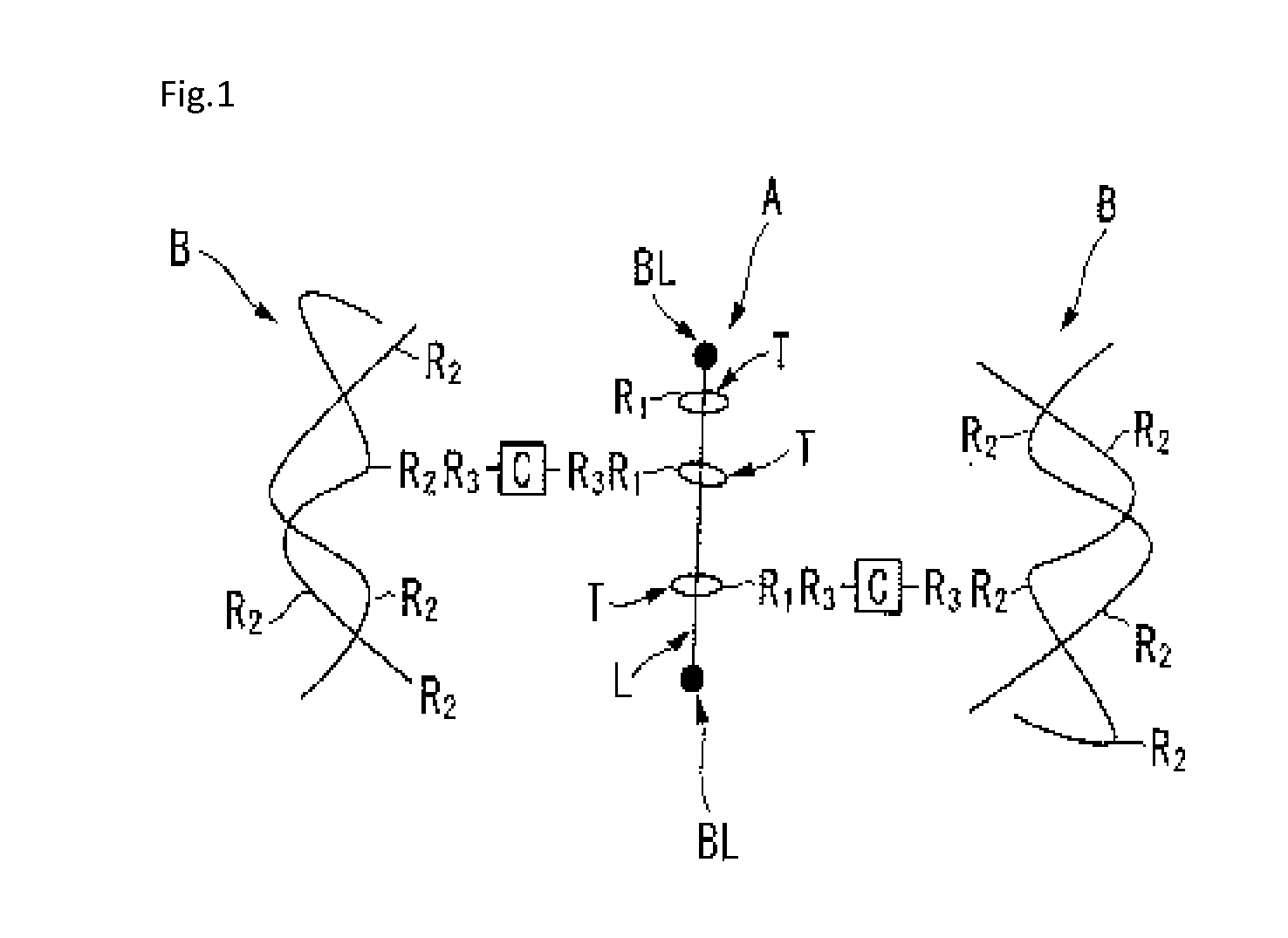Adhesive Sheet for Semiconductor Wafer Processing, Method for Processing of Semiconductor Wafer Using Sheet
a technology of adhesive sheets and semiconductor wafers, applied in the direction of film/foil adhesives, manufacturing tools, transportation and packaging, etc., can solve the problems of grinding water infiltrating the space, the demand for the properties of above mentioned (1) may not be sufficiently satisfied, and the cost increase, etc., to achieve easy deformation, easy re-releasability, and high aggregation property
- Summary
- Abstract
- Description
- Claims
- Application Information
AI Technical Summary
Benefits of technology
Problems solved by technology
Method used
Image
Examples
example 1
[0152]The adhesive agent mixed with 100 parts by weight of the acrylic based adhesive agent (having butyl acrylate and methyl methacrylate as the main component, and copolymer wherein the content of constituting unit derived from 2-hydroxyethylacrylate is 5 wt %, and the weight average molecular weight of 600,000 the glass transition temperature of −43.6° C., and the solid portion of 40 wt %); 10 parts by weight of the isocyanate based crosslinking agent (BHS-8515, the solid portion of 37.5 wt %, made by TOYO INK CO., LTD); and 9.6 parts by weight of polyrotaxane (SeRM Super Polymer A1000 made by Advanced Softmaterials Inc., the solid portion 35 wt %); was coated on the release material (SP-PET381031 made by LINTEC Corporation) so that the thickness after the drying becomes 40 μm, then dried for 1 minute at 100° C., thereby the adhesive layer was formed on the release material. The exposed face of this adhesive layer was adhered to the low density polyethylene film having the thickn...
example 2
[0154]The adhesive sheet was obtained as same as the example 1, except for using the adhesive agent mixing 100 parts by weight of the acrylic based adhesive agent as same as the example 1, 10 parts by weight of the isocyanate based adhesive agent (BHS-8515 made by TOYO INK CO., LTD), and 3.8 parts by weight of polyrotaxane. Also, Table 1 shows the value of 1+α−β, a relative ratio α of a number of the hydroxyl group of polyrotaxane when the number of the hydroxyl group of the acrylic based adhesive polymer is 1, and a relative ratio β of the number of the isocyanate group of the isocyanate compound when the number of the hydroxyl group of the acrylic based adhesive polymer is 1.
example 3
[0155]The adhesive sheet was obtained as same as the example 1, except for using the adhesive agent mixing 100 parts by weight of the acrylic based adhesive agent as same as the example 1, 8 parts by weight of the isocyanate based adhesive agent (BHS-8515 made by TOYO INK CO., LTD), and 6.1 parts by weight of polyrotaxane. Also, Table 1 shows the value of 1+α−β, a relative ratio α of a number of the hydroxyl group of polyrotaxane when the number of the hydroxyl group of the acrylic based adhesive polymer is 1, and a relative ratio β of the number of the isocyanate group of the isocyanate compound when the number of the hydroxyl group of the acrylic based adhesive polymer is 1.
PUM
| Property | Measurement | Unit |
|---|---|---|
| width | aaaaa | aaaaa |
| thickness | aaaaa | aaaaa |
| breaking elongation | aaaaa | aaaaa |
Abstract
Description
Claims
Application Information
 Login to View More
Login to View More - R&D
- Intellectual Property
- Life Sciences
- Materials
- Tech Scout
- Unparalleled Data Quality
- Higher Quality Content
- 60% Fewer Hallucinations
Browse by: Latest US Patents, China's latest patents, Technical Efficacy Thesaurus, Application Domain, Technology Topic, Popular Technical Reports.
© 2025 PatSnap. All rights reserved.Legal|Privacy policy|Modern Slavery Act Transparency Statement|Sitemap|About US| Contact US: help@patsnap.com

